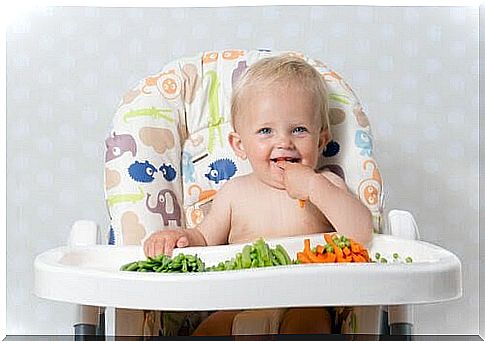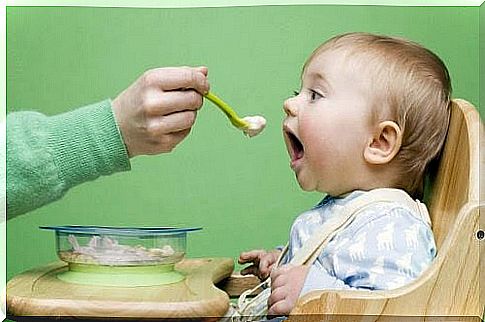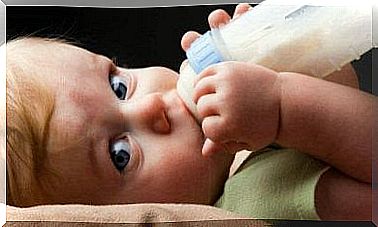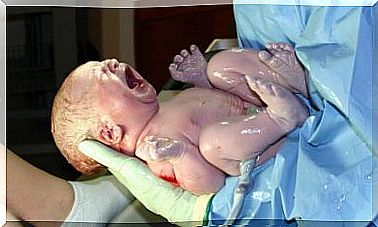5 Guidelines For Introducing New Food

In the first year, children grow rapidly, so the demand for energy and nutrients is great. However, it is best to introduce new foods gradually.
The first nutrition and food a baby should get consists solely of breast milk or substitutes, but around the age of 6 months you can start introducing new foods that he or she will need for his or her development.
Patience is important when you start introducing new food. You need to test yourself and pay close attention to your baby’s signals.
Remember that it is important to introduce new foods one food at a time so that you can detect any allergies or intolerances and so that the child has enough time to get used to the taste of each new dish.
Here are some age-based guidelines to follow.
Guidelines for introducing fresh food
From birth to 4 months of age
From the moment he is born, your baby has an instinctive reflex to turn his head in search of the nipple when something touches his cheek. It is important that during this period he does not ingest any food other than breast milk or substitutes.
Children’s digestive system develops quickly, but you should not feed your baby solid food until his body is ready.
Foods you can give:
Breast milk only or replacement.
From 4 to 6 months of age
During this period, you can start introducing cereals. Start with those that do not contain gluten to avoid intolerances. These cereals can be mixed with breast milk or served as porridge or gruel.
If you use ready-made powders to make porridge and gruel with, added iron, the child will also get this important mineral. Current recommendations in Sweden are to introduce grain products at 6 months of age and preferably while the baby is still breastfeeding.
You can also start with fruits and vegetables. It is best to start with fruits such as apples, pears, bananas and oranges, as well as vegetables such as pumpkin, zucchini and sweet potatoes.
Many people recommend that at this age you can give small, small tastings of almost all the food that the family eats. Here we are talking about extremely small amounts. If you dip the tip of your finger in the food and let the child taste the drop that is on it, it is a reasonable amount.
These flavors are meant to introduce new flavors and not to add nutrition or energy. It still gets your baby the very best from breast milk or replacement.

It is important that you start introducing new foods gradually and without adding salt or sugar.
How to tell if your child can eat solid foods:
- He can hold his head up on his own
- He can sit in a high chair himself
- He can chew
- He shows a steady weight gain
- He has an interest in food
- He can move food from the front of his mouth to the back of his mouth
- He can move his tongue from one side to the other
- He has lost the reflex to push food out of his mouth with his tongue
Foods you can give:
- Mashed vegetables
- Mashed fruit
- Porridge and gruel enriched with iron
From 6 to 8 months
During this period, your child will still taste fruits and vegetables, but you can slowly begin to introduce meat, which has a high nutritional content.
Start with white meat, such as chicken or turkey. Remember to introduce new foods gradually.
Foods you can give:
- Mashed potatoes
- Cottage cheese or soy cheese
- Natural yogurt in small portions
- Washed vegetables
- Cereals enriched with iron
From 8 to 10 months of age
This step is very similar to the previous one. If all goes well and he accepts all new food, you can start introducing cereals with gluten, and even fish.
Fish is very nutritious food just like meat. Start with white fish such as haddock and cod.
Signs that your baby is ready to eat with his fingers:
- He can pick things up between his thumb and forefinger
- He can move things from one hand to another
- He brings everything to his mouth
New foods you can introduce:
- Foods with protein (meat, chicken, fish, tofu, beans, lentils, chickpeas, etc.)

From 10 to 12 months of age
After the age of 1, your child will show signs of being ready for new food. It is important that you introduce the food at two or three day intervals.
Signs that your child can eat other solid foods:
- It’s easier for him to swallow food
- He has got more teeth
- He has stopped taking the food out of his mouth with his tongue
- He’s trying to use a spoon
Foods you can give:
- Fruit cut into small pieces or strips
- Portions of cooked vegetables
It is very important that you are informed about what small children need to eat so that your child can take each step progressively. Remember not to give your child too much food. He will tell you when he is full.
If you have any questions about introducing new foods into your child’s diet, you can consult your pediatrician.









